Why do programmers regularly rewrite other people's ready-made code without adding new functions? It is all about refactoring. Refactoring is like putting things in order at your workplace. If you don't do it for a long time, your work eventually becomes uncomfortable. Code refactoring is a process that involves removing duplicate code, patches, and other issues from the code repository. It can also help avoid code rot, which is a common issue when dealing with programming inconsistencies. And the considerable advantage of refactoring is that it speeds up further development in large teams. How to understand what refactoring is and how to do - it in this article.
Few words about code
The most commonly used definition of clean code is that it is easy to understand and to change. Code is never written just once and forgotten. Having the code to work on efficiently is very important to anyone who uses it.
Dirty code is a type of code that is difficult to maintain and update. It usually refers to the code that was added or updated late in development due to deadline constraints.
Legacy code is the code that was inherited from another person or an older version of the software. It also can be a code that you can’t understand and difficult to change.
Keep it in mind. We return to this a little later. And now we move to the main dish - refactoring.
What is meant by code refactoring?
Code refactoring is a process that involves restructuring a computer code base without adding new features or changes to its external behavior. It generally consists of carrying out a series of small changes to the code base that are minor enough to avoid introducing new errors. In other words, with refactoring, you can simplify not from a functional point of view to increase software performance and reduce potential errors but from a visual point of view. Refactoring improves the design of existing code.
Why is it important?
There is a rule for all programmers - the code must be concise, well-structured and understandable to the developers working with it. Even after a successful software development project, it is still necessary to keep improving the system in order to provide new features and solutions. It so often leads to code complexity as the enhancements are applied in a way that makes it harder to make changes. Source code refactoring can help improve the code's maintainability and provide more excellent readability. It can also help avoid standardization problems caused by the number of developers contributing their own code. Besides that, refactoring helps minimize the amount of technical debt that developers accumulate as a result of not taking advantage of opportunities to improve the code.
Technical debt is the price a company will pay later for choosing a simpler, faster, yet less reliable option today. Any compromise you make to release products or features faster in the present will accumulate a greater volume of work to do in the future:
Technical Debt 101: the Bottomless Pit of Cheap Software Development
Technical debt is the price a company will pay later for choosing a simpler, faster, yet less reliable option today. Any compromise you make to release products or features faster in the present will accumulate a greater volume of work to do in the future.
What are the benefits of code refactoring?
The indisputable benefits of refactoring:
- Improving the objective readability of the code by reducing or restructuring it.
- Encouraging developers to write software more thoughtfully, following a given style and criteria.
- Preparing a springboard for creating reusable pieces of code.
- Making it easier to find bugs in a large amount of code.
When to refactor
When adding features
The best time for refactoring is before adding new features or updates to existing code. Doing so can help improve the product's quality. By cleaning the code base before adding new features or updates, it helps to make the product more robust and easier to use in the future.
Rule of Three
- When you doing something for the first time just get it done.
- The second time around, you may be a bit faster, but the code still won't be as clean as it should be.
- When you do something for the third time, start refactoring.
During a code review
This is the last chance to clean up the code before the product is launched. Doing so can help you identify areas of the code that are worth fixing.
It's also a good time to start refactoring after the product has been launched. Since many developers start working on code refactoring after the product has been released, it allows them to get more work done before going on to the next project.
What aspects of the code is refactoring aimed at?
Among the many opportunities to "tidy up" the code, we can distinguish the following main aspects, which are always worth paying attention to:
Unused code - unused variables or methods that are in the code base
Duplicates - identical functions or variables. And there can also be identical methods in objects but described in each of them separately.
Functions and variables with unclear names
An excessive amount of text in one method
A superfluous amount of comments
Incorrectly formatted code fragments - functions and loops not written correctly, extra spaces from the beginning of a line, etc.
How do you refactor code?
Nowadays, there are vast amounts of different practices for code refactoring. Here you can find an online catalog of refactoring. But we take the most popular ones.
Red-Green-Refactor
The Red-Green-Refactor method is a widely used refactoring technique in Agile development. It involves breaking down the code into three separate steps. This method is an example of Test-Driven Development (TDD). TDD is a common type of refactoring that involves writing the tests before the code is written. These tests help determine the exact steps that the program should take.
Red-Green-Refactor method consists of three steps:
- Red: Consider what you are developing and write a failing test for it.
- Green: Write implementation code to pass the test.
- Refactor: Search for ways for optimizing and improving the code.
So basically there are two parts. The first part of this technique is code creation, which involves adding a new function to your system. The second part is code that does the work of adding the new function.
Refactoring by Abstraction
This technique is mainly used by developers who need to refactor large amounts of code. Primarily, it helps reduce the redundant code in their work.
If you have a lot of code refactoring that needs to be done, this technique may be the one for you.
Branching by abstraction is a type of refactoring that focuses on reducing unnecessary duplications in the code. It helps reduce the redundant code in their work by extracting subclasses, collapsing hierarchy, and so on. An example of an abstract method is the Pull-Up/Push-Down method. This method splits a class into two, with one bound to a superclass and the other to a subclass.
Pull-Up method: It pulls code parts into a superclass and helps in the elimination of code duplication.
Push-Down method: It takes the code part from a superclass and moves it down into the subclasses.
Basically, this technique involves creating an abstraction layer for the parts of the system that need to be changed. By implementing abstraction, you can make significant changes to the code incrementally. This method allows you to release the system regularly.
Composing method.
During the development phase, a lot of times, developers write long methods that are very hard to change. This technique is mainly used in cases where the code is extremely hard to understand.
The Compose method is a type of refactoring that simplifies the work of developers by removing unnecessary code duplication. These include extraction and inline method:
Extraction breaks down the code into smaller chunks to find and extract fragments. It then moves the fragments to a new method and calls it. The fragments are then moved to a new method and replaced with new content.
Inline refactoring is a technique that aims to reduce the number of methods while still simplifying the code. It can remove non-essential methods and replace them with new content.
Simplifying method
It's important to get rid of the old code and simplify the logic. There are a variety of ways to do this, such as consolidating conditional expressions and methods.
Simplification involves taking care of the interaction between classes. It can also involve removing or replacing old methods and clauses. This approach simplifies the interface between classes and method calls. For example, we can introduce new parameterizations, remove method calls, and preserve the whole object.
There are many ways to simplify the logic of conditional statements. Some of these include: consolidating conditional expressions, replacing conditional fragments, and so on.
Moving features between objects
This technique creates new classes and moves the functionality safely between the old and new classes.
Sometimes, it is necessary to move the code from one class to another to free up some space. For example, if a class has many responsibilities and is not doing anything in an application, it can be moved to another class.
Preparatory refactoring
This technique is very useful if the code is in need of refactoring while implementing new features. It saves the developer from future technical debt. It is usually used in software updates to make changes as soon as the developers notice a need for it.
The end-user doesn't see the effort of the developers when it comes to refactoring the code. However, they can still benefit from the savings that come from doing so.
Extract method
The extract method is a type of code refactoring that aims to decrease complexity and increase the overall readability of the code by moving fragments from one method to another. If there is only one output variable, the method returns the return value. In the case of multiple output variables, the method may not be applied.
User face refactoring
It is about that you can also make changes in the UI and the code by applying various features. Some of these include: applying font, changing the style, and increasing the color contrast.
What about refactoring legacy code?
The goal of refactoring legacy code is to make it easier to understand and work with. It aims to improve the structure of the code by reducing redundant or erroneous entries.
One of the main advantages of refactoring in legacy code is that it can be done on any software architecture. It allows developers to focus on improving the quality of the code without the need for unnecessary downtime.
Since code refactoring can't change the functionality of the software, it requires a team of developers to simplify the process.
For instance, if your project is dealing with legacy PHP core functionalities, it is important to identify how well-documented and operationally robust the software is. An audit is also an integral part of any project that's dealing with legacy code. It can help identify potential issues and gain viability into the existing code.
The refactoring legacy code process involves splitting the monolith code into focused classes, test, and release the code after the refactoring. Splitting code is a technique that helps developers focus on the modules that are important to the development of their projects. It allows them to map out their next steps.
Then the developer has to choose architecture. The right software architecture can play a huge role in the success of the project. It can help determine the various factors that might affect the implementation of your software.
Before you start thinking about the architecture of the project, it's essential to consider the various aspects of the software, such as its scalability and component interactions.
Refactoring legacy software is an excellent strategy for businesses that want to keep their existing applications running smoothly. It can help improve the efficiency of their processes, increase their productivity, and provide them with a competitive advantage.
When you don’t need refactoring?
Sometimes, it's better to skip refactoring and get started with a new product instead. If you're planning on revamping the app from the beginning, then starting from scratch is a better option. It avoids the need for refactoring since it can be very time-consuming and still maintain its exact same state.
Another situation can be If you don't have tests to show that the code has been affected by refactoring, then you should not refactor it.
Best Practices for code refactoring
Understand the code
Before you start refactoring the code, it's important to thoroughly review the source code to ensure that you understand the various components of the application. Having a sequence diagram will help you understand the various steps in the code.
Set defined objectives
Before beginning the code refactoring process, it's also important to set goals and schedule specific tasks that align with the current workflow. These goals should also be well-defined and not dependent on other tasks. This will help avoid delays.
Time planning
One of the most challenging parts of code refactoring is choosing the time to finish it. You should then determine the exact steps that will allow you to complete the project within a reasonable timeframe.
Although cleaning up the code is very time-consuming, it's also beneficial to refactor once you're convinced that the code can be made more efficient and maintainable. Doing so will help avoid accruing more technical debt in the future.
Always test
Although code refactoring doesn't alter the functionality of the program, it still requires testing to ensure that the new code doesn't introduce new bugs. The testing stages are critical during the code refactoring process. Doing so helps avoid making changes to the code and inadvertently affecting the product's functionality.
It's also a good idea to involve your testers and QA in the code refactoring process.
Try refactoring tools
It's also essential to use tools that can help speed up the code refactoring process and minimize the chances of issues that can get overlooked. Modern tools also help ensure that the code is consistent and accurate.
For example:
Focus on the process, not on perfection
The truth is that you'll never be 100% satisfied with the results of the code refactoring process. Even though it's still important to start thinking about the process as an ongoing maintenance project. It will require you to regularly clean and organize the code.
To sum up
In full, refactoring is a process that involves revising the code's source code. It doesn't introduce new features or changes in the underlying system. It's a discipline that helps keep the code running smoothly and without introducing bugs. Another benefit of refactoring is that it allows the developers to focus on the details that will drive the implementation of the solution instead of just the code itself.
With the proper refactoring techniques, you can get rid of outdated software applications and improve their overall functionality without compromising their current state.
Previously published at maddevs.io/blog.



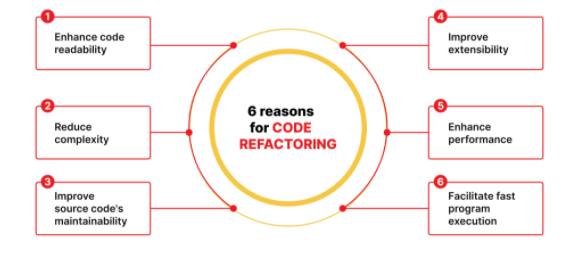


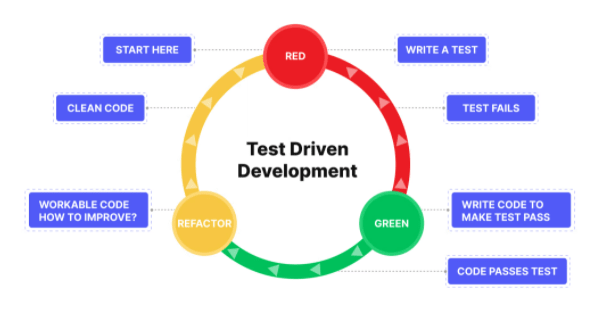
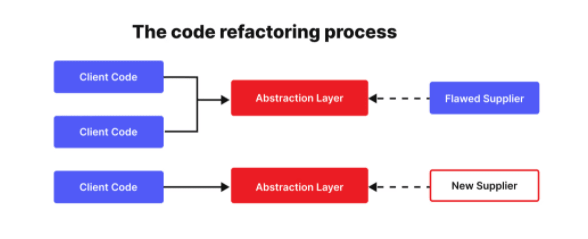
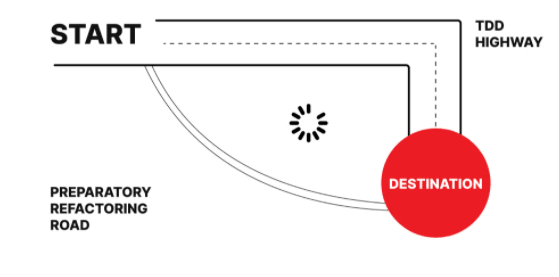
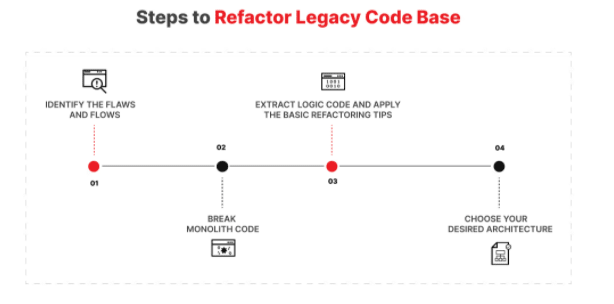


Top comments (0)